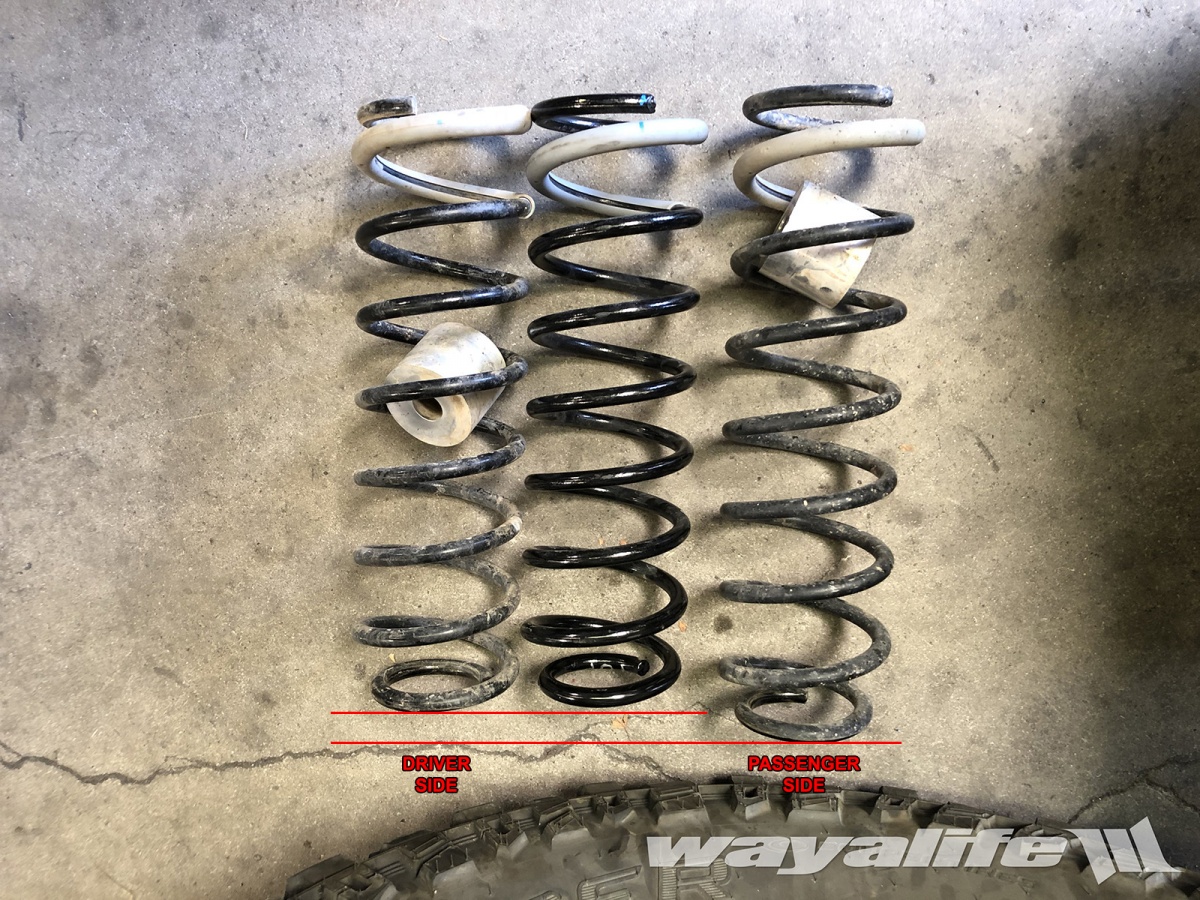From the moment that Cindy and I first laid eyes on JET Li, our 2018 Jeep JL Wrangler Rubicon Unlimited, we could see that he had a slight lean to one side. Nothing major mind you and really, maybe not even enough to mention but there it was. Of course, all the JK Wranglers we've ever owned all had a lean as well and so, this was far from being a surprise to us. However, what was a surprise was that JET's lean was to the left - as in, to the driver side and of course, for anyone who's ever owned a JK, you'd know that they all have a lean to the right or passenger side.
With a large tank running along the length of the passenger side frame rail, it's pretty easy to see how a lean to that side could occur, especially when it's full. With gasoline weighing about 6 lbs. a gallon, a full 4-door tank will weigh over 130 lbs. and if you add in the gas tank itself and its skid plate, you pretty much have the weight of a grown man standing on that side. So... how is it possible that a JL Wrangler has a lean to the LEFT?
While helping a friend do some suspension R&D, we pulled our factory Rubicon coils and decided to measure them against a set Sahara and Sport coils to see if there was in fact a difference between them and if so, by how much. Initially, we just checked 2 front and 2 rear coils and could see right away that there was a difference but then, when we decided it might be a good idea to compare all 4 front and rear coils and discovered something rather interesting.
The photo below shows our driver side Rubicon front coil on the left, a driver side Sahara front coil in the center and while there is a slight difference between the two, both are measurably shorter than our passenger side front coil. In fact, we measured almost a 1" difference.

I should note that the rear coils weren't as pronounced as the fronts but the passenger side was still in fact taller but by maybe only 1/2".
So, what does all this mean you might ask? Well, I think it's pretty safe to assume that Jeep has taken steps to help mitigate the lean we've all been seeing on JK's for years and have done so for the JL Wrangler by installing springs on the passenger side that can hold up more weight. What this also means is that JL Wrangler coils are in fact side specific (driver side coils having green tags and the passenger side having gray tags) and that aftermarket coils will most likely cause a slight lean to the right - this of course is due to the fact that they are typically made the same size.
With a large tank running along the length of the passenger side frame rail, it's pretty easy to see how a lean to that side could occur, especially when it's full. With gasoline weighing about 6 lbs. a gallon, a full 4-door tank will weigh over 130 lbs. and if you add in the gas tank itself and its skid plate, you pretty much have the weight of a grown man standing on that side. So... how is it possible that a JL Wrangler has a lean to the LEFT?
While helping a friend do some suspension R&D, we pulled our factory Rubicon coils and decided to measure them against a set Sahara and Sport coils to see if there was in fact a difference between them and if so, by how much. Initially, we just checked 2 front and 2 rear coils and could see right away that there was a difference but then, when we decided it might be a good idea to compare all 4 front and rear coils and discovered something rather interesting.
The photo below shows our driver side Rubicon front coil on the left, a driver side Sahara front coil in the center and while there is a slight difference between the two, both are measurably shorter than our passenger side front coil. In fact, we measured almost a 1" difference.

I should note that the rear coils weren't as pronounced as the fronts but the passenger side was still in fact taller but by maybe only 1/2".
So, what does all this mean you might ask? Well, I think it's pretty safe to assume that Jeep has taken steps to help mitigate the lean we've all been seeing on JK's for years and have done so for the JL Wrangler by installing springs on the passenger side that can hold up more weight. What this also means is that JL Wrangler coils are in fact side specific (driver side coils having green tags and the passenger side having gray tags) and that aftermarket coils will most likely cause a slight lean to the right - this of course is due to the fact that they are typically made the same size.
